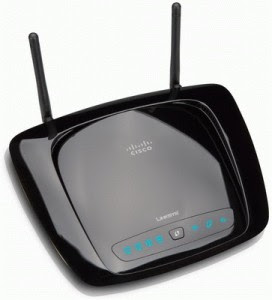rom the CCNA to the CCIE, ISDN is one of the largest TECHNOLGIES you go to work. It is also very common in the area of ISDN is frequently used as a backup connection in case of an organization set up frame relay links below. Therefore, it is important to know ISDN basics not only for its special examination, but for professional success.
ISDN is between two Cisco routers, the BRI or PRI interfaces are used. Basically, with ISDN router is a call to another router. E 'key to understanding not only what takes a router to choose another, but what makes the connection down.
Why? Since ISDN is basically a phone call from one router to another, you get billed for that call - to the minute. If one of your routers dials another and not blocked, the connection can theoretically last for days or weeks. The network manager then receives an astronomical phone bill, the bad things leads to all!
Cisco routers use the concept of interesting traffic to decide when a router should make another call. By default there is no interesting traffic, so that if one is not set, will never call another router.
Interesting traffic is defined with the dialer-list. This command offers many options so that you can tie interesting traffic is not only the protocols that can provide the link available, but what the source, destination, or even port number must be in the mount line.
A common error that occurs when connected. Interesting traffic is required to create the link, but all network traffic can be an ISDN connection.
What is the connection down? Once again, the concept of interesting traffic is used. Cisco routers have a minimum of upheaval, their interfaces for remote access. If no interesting traffic across the link for the time specified by the timeout, the connection between the bottom.
To summarize: Interesting traffic brings the link by default, the total traffic the connection as soon as it as a lack of interesting traffic intersection is what brings the link below.
Equally important is knowing what keeps the connection when it made. Why? ISDN, because it is like a telephone conversation between two routers and the beak in this way to the customer. Both routers are connected by this phone call, can be represented in different area codes, so now talking about a long distance call.
If your ISDN connection, it is not a reason for the separation, the connection could theoretically last for days or weeks before anyone notices what is going on. This is especially true if the ISDN connection as backup for another type of connection is used, as often happens with Frame Relay. If the frame relay fails, comes to backup ISDN connection when the frame relay link back to not put all this time into account.
To understand why an ISDN connection remains, if not required, we must understand why you continue to work time. Cisco ISDN interfaces use the idle-timeout to determine when an ISDN connection needs to be demolished. By default, this value is two minutes and it also uses the concept of interesting traffic.
After some interesting traffic brings the link, all network traffic can cross the link. However, only interesting traffic sets the idle timeout. If no interest in the traffic on the link for two minutes, the minimum timer to zero and the connection between the bottom.
If the protocol is running on the ISDN link is RIP version 2 or EIGRP, the most effective way to prevent the routing updates is to keep the line explicitly prohibits update their multicast routing address to the access list, the definition of interesting traffic. Not prevent all or via the link protocol used much of the work properly.
With OSPF, Cisco offers IP OSPF demand circuits interface level. OSPF adjacency will form the ISDN connection, but once formed, the hello packets will be dropped. However, the neighborhood is not lost. A review of the connectivity table with show ip OSPF adjacency shows the still nearly full, even though Hellos are not sent over the link. ISDN connection can fall without loss of proximity. If the connection is requested, the area is still in force and the data can not wait to OSPF, are sent to go through the usual steps for the formation of an adjacency pair.
This OSPF command is for Cisco certification candidates at all levels is crucial, but it is especially important for the CCNA candidates. Learning this order now, get to the fact that proximity remains in force, even though Hellos are suppressed, and add this command to use your valuable toolbox Cisco.
One myth is that maintaining Cisco ISDN discovery packets is an ISDN-up. CDP is a Cisco proprietary protocol, which is connected directly between the devices of Cisco. There is a school of thought, the CDP packets on a BRI interface must be disabled to keep the connection to prevent or composition, if it is not really necessary. I worked with ISDN for years in the field and laboratory investigations, and I've never seen CDP establishment of an ISDN connection.





